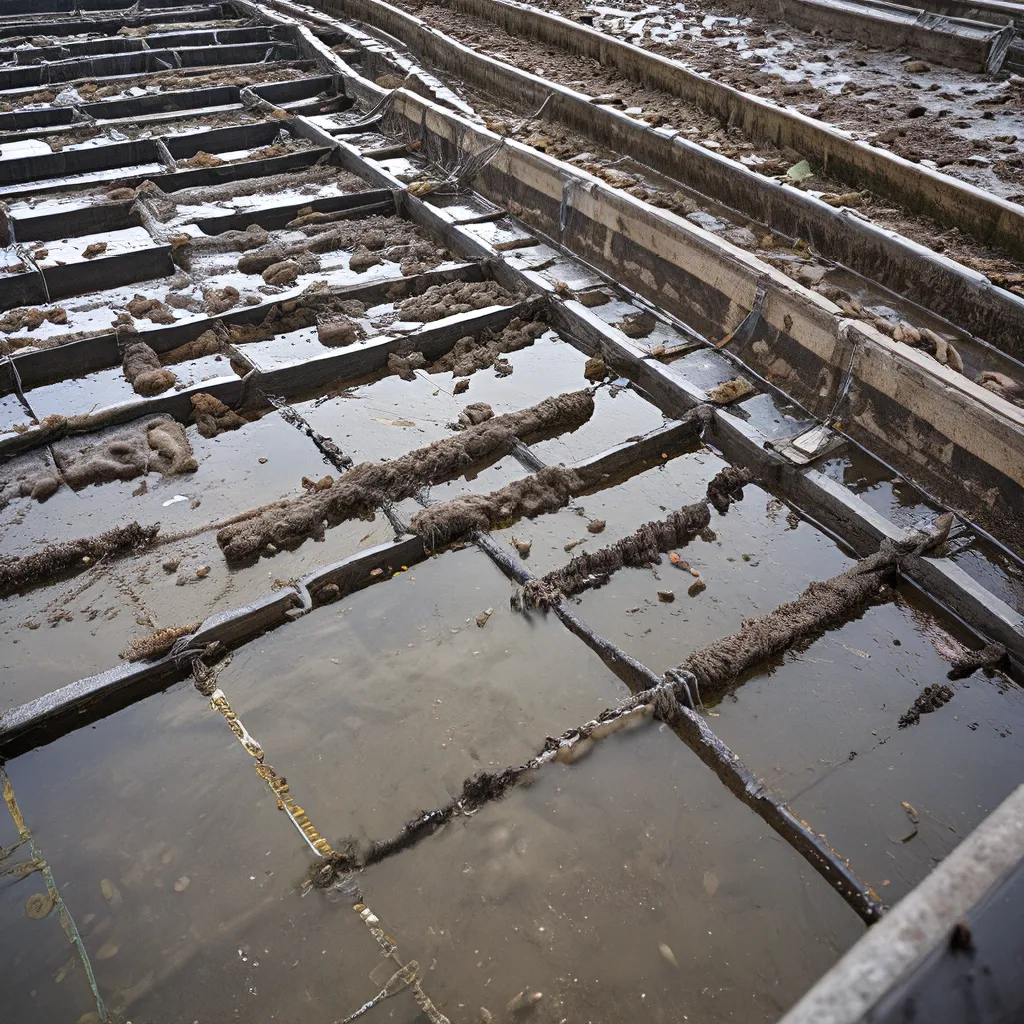
As an environmental enthusiast, I’m always on the lookout for innovative ways to turn waste into something useful. And let me tell you, the world of wastewater treatment is where the real magic happens! It’s like turning trash into treasure, but with a scientific twist.
Unlocking the Potential of Wastewater
Think about it – every time we flush the toilet or wash our hands, that water doesn’t just disappear. It goes through a complex journey, winding its way through pipes and treatment facilities, where the real transformation takes place. And the best part? This transformation isn’t just about getting the water clean; it’s about extracting valuable resources from that “dirty” water.
Recent research has shown that wastewater is a goldmine of nutrients, energy, and even bioplastics. That’s right, the same stuff that might have seemed like a waste is actually a treasure trove of potential. And the experts are working hard to unlock these hidden gems.
Revolutionizing the Bioeconomy
Enter the bioeconomy – a fancy term for the economic activities that rely on biological resources, like the ones found in wastewater. This rapidly growing field is all about finding ways to transform these resources into valuable products, from renewable fuels to biodegradable plastics.
The HOOP project, for example, is exploring how cities can recover valuable resources from their wastewater and turn them into new revenue streams. Imagine a world where your toilet flushes could power your car or your dirty dish water could be the building blocks for your next reusable shopping bag. It’s a game-changer!
Nutrient Recovery: Closing the Loop
One of the most promising areas of wastewater treatment is nutrient recovery. Think about it – all those nutrients that get flushed down the drain, like nitrogen and phosphorus, are actually essential for things like plant growth and soil health. But instead of letting them go to waste, wastewater treatment plants are finding ways to extract and recycle them.
The HOOP project is a great example of how this works. By using specialized technologies, they’re able to recover these nutrients and turn them into valuable fertilizers and soil amendments. It’s like closing the loop on the nutrient cycle, and it’s a game-changer for sustainable agriculture.
Energy from Waste: Harnessing Biogas
But the magic doesn’t stop there! Wastewater treatment plants are also getting in on the renewable energy game. Did you know that the organic matter in wastewater can be broken down to produce biogas, which can then be used to generate heat and electricity?
It’s like turning trash into fuel, and it’s a win-win for the environment. Not only does it reduce the amount of waste going to landfills, but it also helps to offset the carbon footprint of the treatment plant itself. And the best part? This biogas can be used to power the treatment plant, making it more self-sufficient and reducing its reliance on fossil fuels.
Bioplastics: The Future of Sustainable Packaging
But wait, there’s more! Wastewater treatment is also playing a role in the development of bioplastics – a sustainable alternative to traditional, petroleum-based plastics. By extracting specific types of microorganisms from wastewater, researchers are able to produce polyhydroxyalkanoates (PHAs), which can be used to create biodegradable plastics.
These bioplastics have a wide range of applications, from packaging materials to medical implants. And the best part? They’re made from renewable resources, so they don’t contribute to the growing problem of plastic waste.
Challenges and Opportunities
Of course, transforming wastewater into valuable products isn’t without its challenges. There are still technical hurdles to overcome, such as optimizing the extraction and purification processes, and ensuring the quality and consistency of the final products.
But the potential benefits are so vast that the research and development in this field is accelerating at a rapid pace. And as more cities and municipalities jump on board, the bioeconomy is poised to become a game-changer in the world of waste management.
So, the next time you flush the toilet or run the sink, remember that the water flowing down the drain is actually a treasure trove of untapped potential. And with the help of innovative wastewater treatment solutions, that treasure can be transformed into a sustainable, profitable, and eco-friendly future.
Now, if you’ll excuse me, I’m off to see what other hidden gems I can find in the world of wastewater. Who knows what kinds of amazing products might be waiting to be discovered? The possibilities are truly endless!